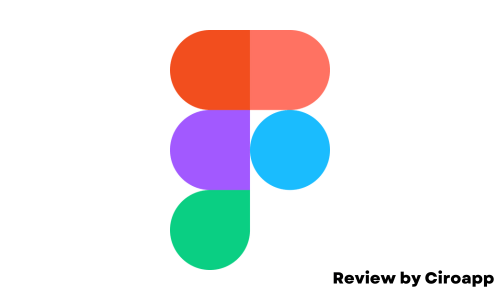In the dynamic world of digital design, Figma emerges as a game-changer, revolutionizing how teams collaborate and create. This comprehensive guide delves into the depths of Figma, a tool that’s not just redefining the boundaries of design but also fostering a new era of creativity and efficiency.
From its intuitive interface to its robust prototyping capabilities, Figma is the go-to platform for designers seeking to push the limits of innovation.
Whether you’re a seasoned professional or a budding designer, this exploration of Figma’s features, benefits, and applications promises to unveil the secrets of this cutting-edge tool, transforming the way you approach design projects.
Read further to learn more about Figma, in our review we will detail its features, pros and cons with our rating, and a conclusion about why you should use it.
Click on “open” if you want to see exactly what we will talk about in the rest of this article.
Overview
What is Figma?
Figma is a design collaboration software that enables real-time co-creation, allowing designers to work together efficiently in a single space. It offers tools for designing, prototyping, and creating design systems, ensuring workflow efficiency and visibility throughout the process.
Figma’s features include realistic prototyping for quick iteration on flows and states, and a new Dev Mode to bring design and development closer together.
Additionally, it provides FigJam, an online whiteboard for team collaboration, supporting various use cases like UI/UX design, wireframing, brainstorming, and strategic planning.
Figma is trusted by teams for its ability to standardize components, facilitate remote design, and streamline agile workflows, making it a comprehensive tool for design and development.
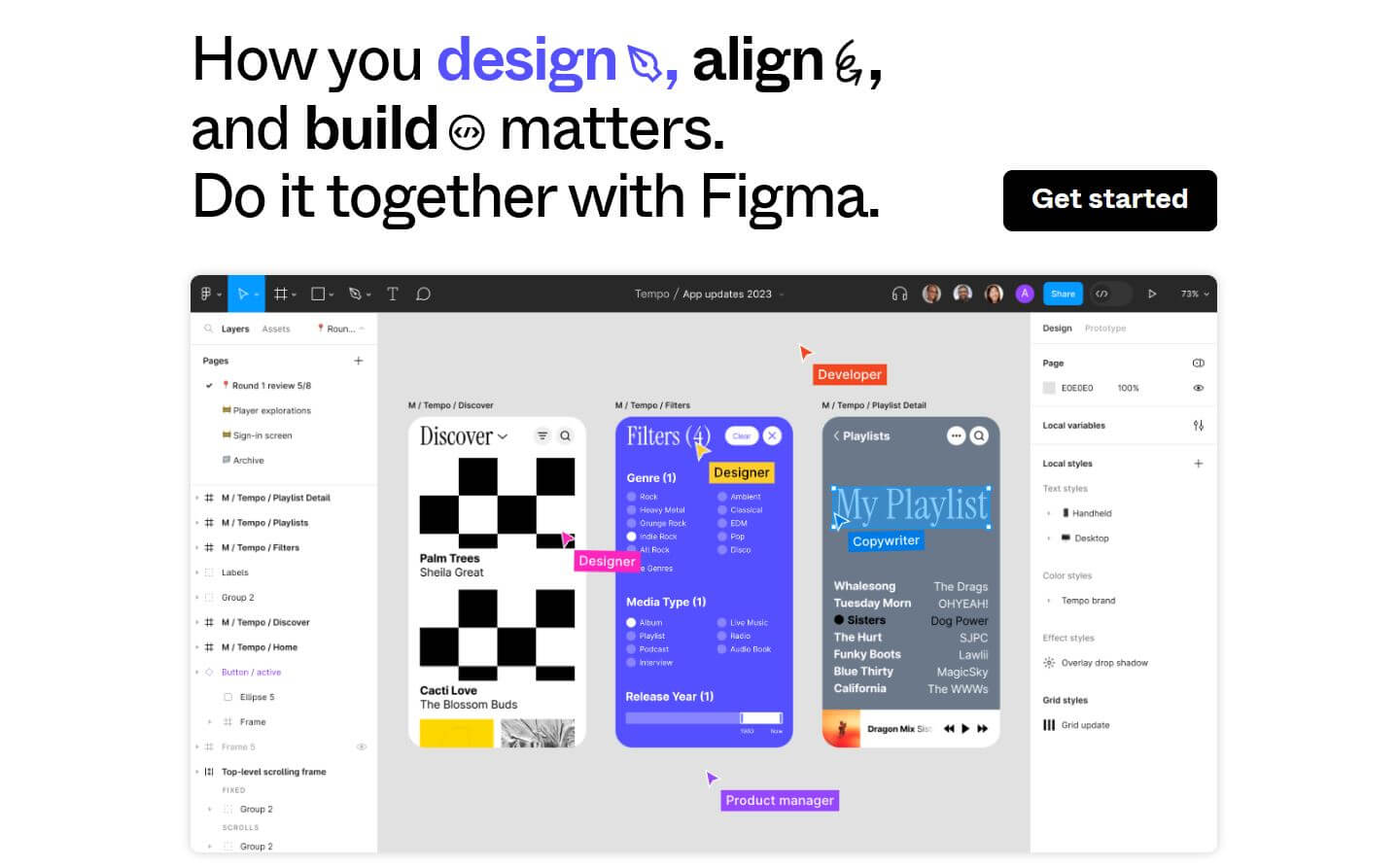
Figma specifications
| Features | Advanced Conditional Logics / Centralized Dashboard / Cross-Platform / Design Library / Dev Mode / Easy File Sharing / Export to multiple formats / FigJam / Guest Management / Interactive Whiteboards / Link Sharing / Mobile app / Password Protect / Personalized Workspaces / Prototyping / Shared and private projects / Single Sign-On (SSO) / Team access / Team and Collaboration / User Interactive Dashboard |
| Best suited for | Individuals, Freelancers, Small businesses, Mid size businesses, Large enterprises |
| Website languages | Chinese / Deutsch / English / French |
| Website URL | Visit official website |
| Support link | Support page |
| Live chat | No |
| Company address | 760 Market St, San Francisco, California 94103, US |
| Year founded | 2012 |
Pricing
Figma pricing: How much does Figma cost?
| Pricing range | From $12 to $75 per month |
| Pricing types | Annual subscription / Monthly subscription |
| Free plan | Yes |
| Free trial | Yes, 30 days |
| Money back guarantee | Yes, 14 days |
| Pricing page link | See plans |
Figma pricing plans
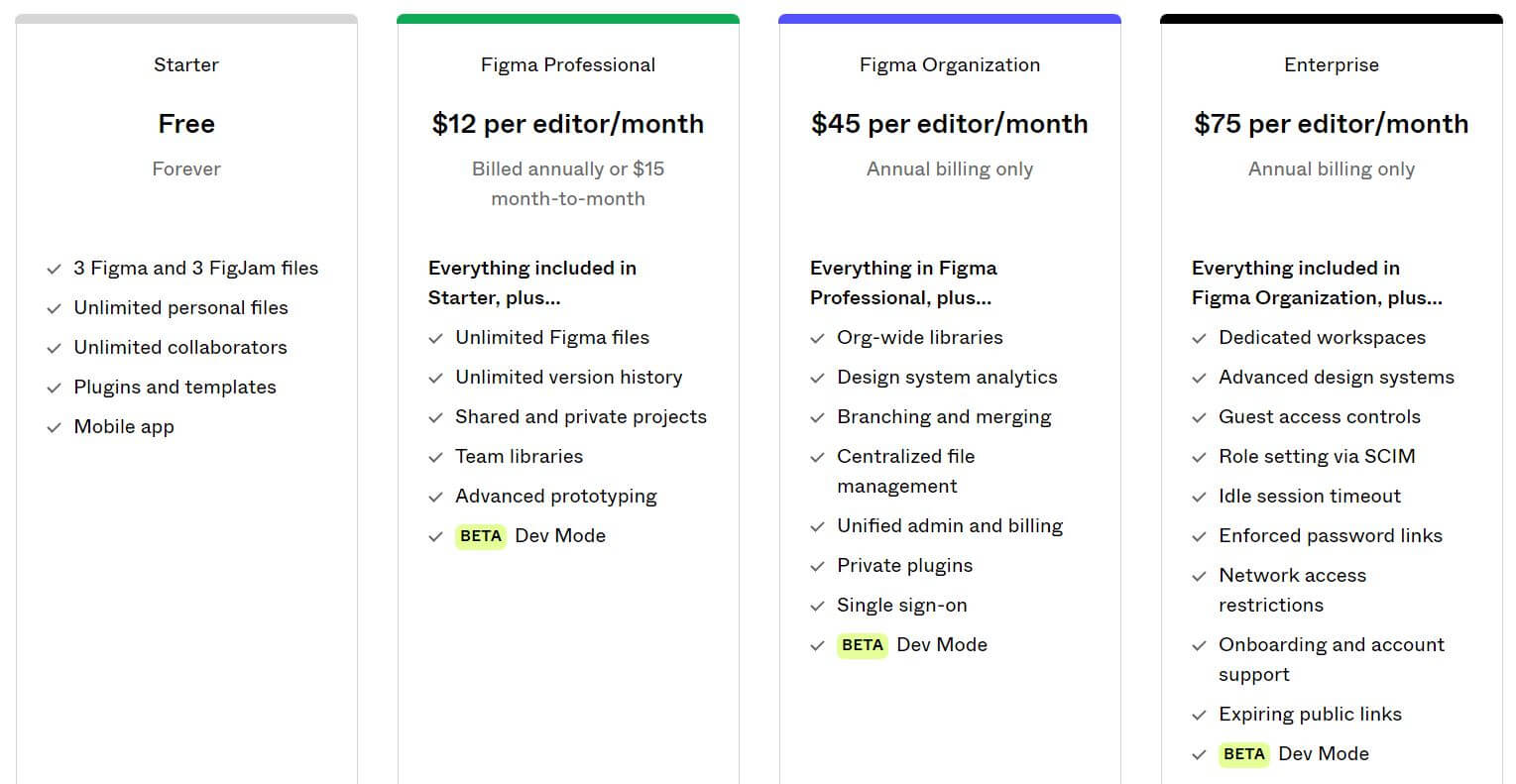
Figma offers various pricing plans to cater to different user needs:
Starter (Free)
-
- Access to 3 Figma and 3 FigJam files
- Unlimited personal files
- Unlimited collaborators
- Plugins and templates
- Mobile app access
Figma Professional ($12 per editor/month, billed annually or $15 month-to-month)
-
- Includes everything in Starter
- Unlimited Figma files
- Unlimited version history
- Shared and private projects
- Team libraries
- Advanced prototyping
- Dev Mode (Beta)
Figma Organization ($45 per editor/month, annual billing only)
-
- Includes everything in Figma Professional
- Org-wide libraries
- Design system analytics
- Branching and merging
- Centralized file management
- Unified admin and billing
- Private plugins
- Single sign-on
- Dev Mode (Beta)
Enterprise ($75 per editor/month, annual billing only)
-
- Includes everything in Figma Organization
- Dedicated workspaces
- Advanced design systems
- Guest access controls
- Role setting via SCIM
- Idle session timeout
- Enforced password links
- Network access restrictions
- Onboarding and account support
- Expiring public links
- Dev Mode (Beta)
Additionally, starting in 2024, Dev Mode will be included in all editor seats or can be purchased separately for $25 per seat/month on Organization, and $35 per seat/month on Enterprise.
Features
Figma features: What can you do with it?
Diving into the features of Figma, we uncover the layers that make this tool a standout choice for designers and teams worldwide. Each feature of Figma is meticulously crafted to enhance the user experience, from its intuitive design interface to its advanced prototyping capabilities.
This section will explore how these features come together to create a seamless and dynamic design environment, demonstrating why Figma is more than just a tool – it’s a catalyst for creative excellence.
Design Features
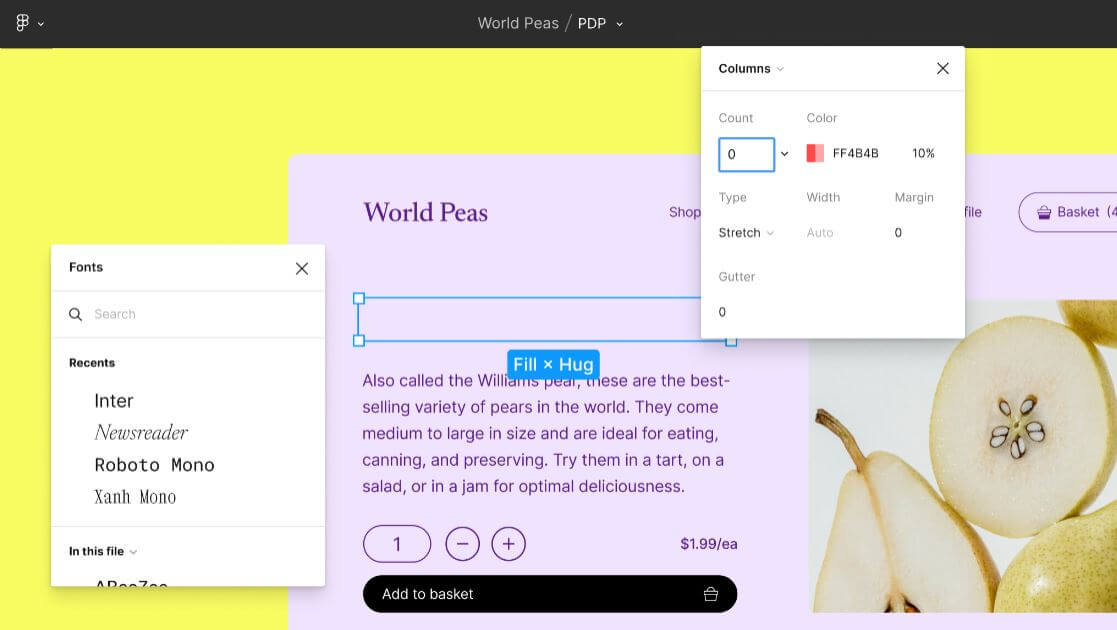
Figma’s design features extend beyond basic functionality, offering a suite of tools that cater to the modern needs of digital design.
The platform’s auto layout feature is a game-changer, automatically adjusting and resizing elements to fit different screen sizes, which is crucial in a world where designs must be responsive across a multitude of devices.
This feature not only saves time but also ensures consistency and accuracy in responsive design.
Figma also excels in promoting design consistency through its robust design systems. By standardizing styles, components, and variables, teams can maintain a uniform look and feel across all their products, which is essential for brand identity.
The platform’s intuitive interface is another significant advantage. It lowers the learning curve for new users while providing advanced features for seasoned designers.
Features like smart select and the pen tool for vector networks enhance precision and creativity, allowing designers to easily manipulate layers and create complex shapes and illustrations.
Additionally, Figma’s cloud-based nature means that all changes are saved and synced in real-time, ensuring that team members always have access to the latest version of a design.
Prototyping
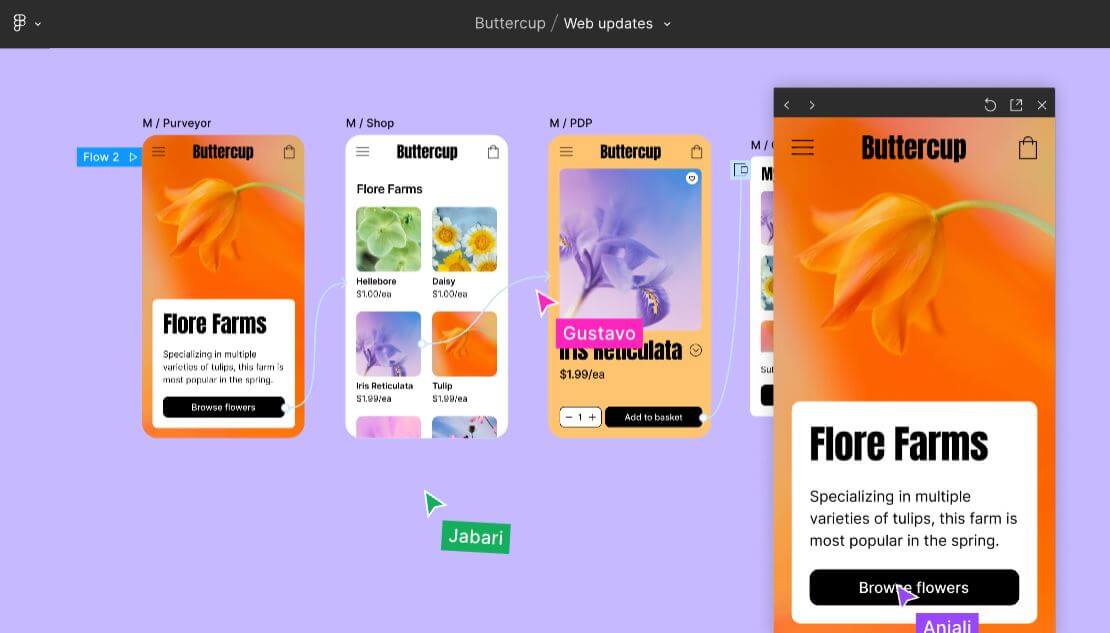
Figma’s prototyping feature stands out by allowing designers to create fully interactive prototypes without the need for coding. This capability is crucial for testing user experiences and interfaces before they are handed off for development.
Designers can simulate interactions, animations, and transitions, providing a clear and tangible representation of how the final product will function. This level of interactivity is invaluable for user testing, as it allows for the collection of realistic feedback on the usability and appeal of a design.
Figma’s prototyping tools are also highly collaborative. Team members can leave comments and feedback directly on the prototype, making the review process more efficient and integrated.
The ability to link different frames and create a flow within the prototype makes it easier to demonstrate the user journey and the overall feel of the application or website.
Furthermore, Figma’s prototyping feature is seamlessly integrated with its design tools, meaning that any changes in the design are automatically reflected in the prototype, ensuring a smooth and efficient workflow from design to prototype.
Dev Mode
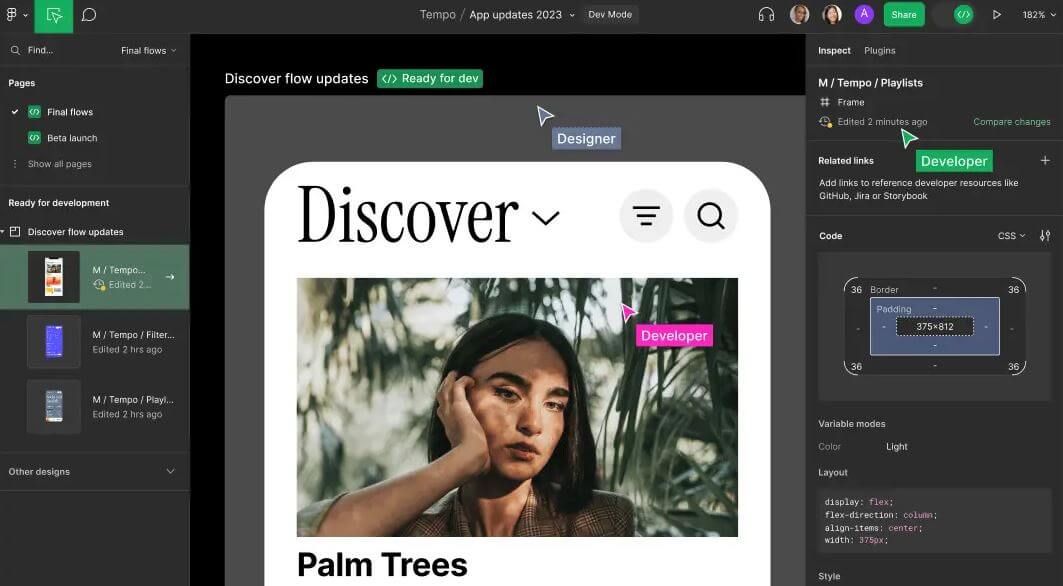
Dev Mode in Figma is a revolutionary feature that significantly eases the handoff from design to development. It provides developers with a dedicated space where they can view design files with an emphasis on the technical details needed for implementation.
This includes access to CSS, iOS, and Android code snippets, which can be directly copied and used in development, significantly speeding up the coding process.
Dev Mode also offers insights into the properties of design elements, such as dimensions, colors, and fonts, ensuring that developers have all the necessary information to recreate the design accurately in code.
This feature is particularly beneficial in agile and fast-paced environments where time is of the essence. By providing a clear and detailed view of the design, Dev Mode reduces the likelihood of misinterpretation or errors during the development phase.
It fosters a more collaborative and efficient relationship between designers and developers, as both parties can work closely within the same ecosystem.
The integration of Dev Mode into the Figma platform also means that any updates or changes in the design are immediately available to developers, keeping everyone on the same page and reducing the risk of discrepancies between the design and the final product.
Collaboration Features
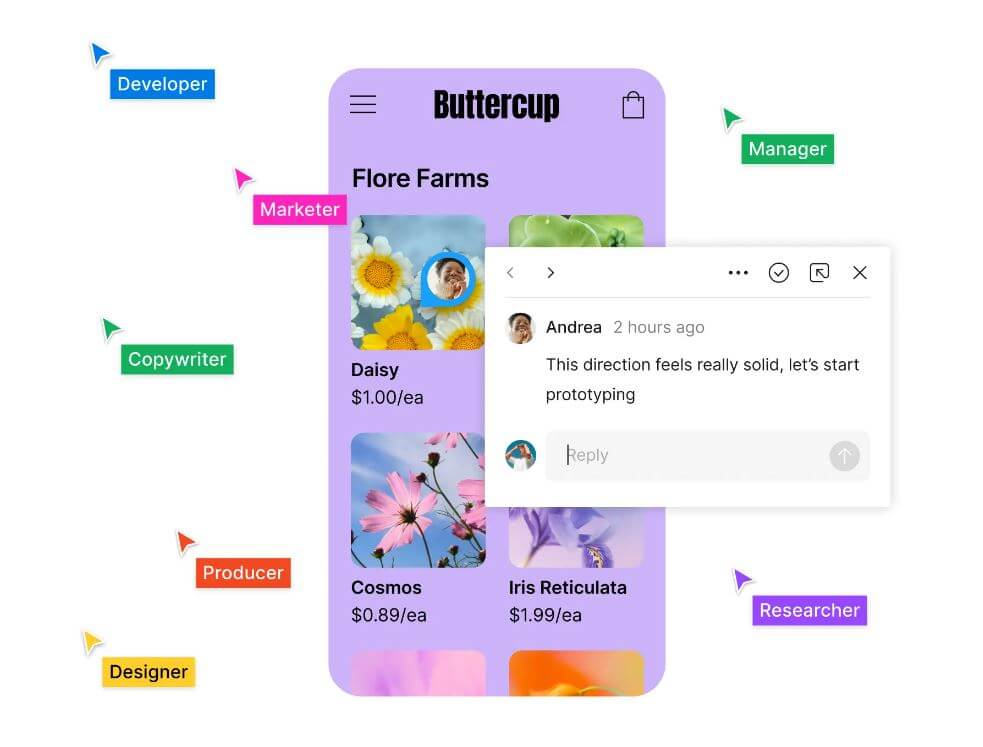
Figma’s collaboration features are a cornerstone of its design philosophy, enabling a seamless and interactive design process among team members, regardless of their physical location.
The platform’s multiplayer functionality allows multiple users to work on the same file simultaneously, offering a real-time view of each other’s contributions.
This feature is akin to a digital whiteboard, fostering a dynamic and collaborative environment where ideas can be shared and iterated upon instantly. Figma’s version control is another critical aspect, providing a comprehensive history of changes made to the design file.
This ensures that teams can track progress over time and revert to previous versions if needed, adding a layer of security and control to the design process. The commenting feature in Figma is particularly useful for asynchronous collaboration.
Team members and stakeholders can leave feedback directly on the design, making it easier to gather and address comments without the need for lengthy meetings or email threads. This feature enhances the efficiency of the review process and ensures that feedback is contextual and actionable.
Additionally, Figma facilitates the organization of design files with the ability to add sections and pages, making it easier for team members to navigate and understand complex designs.
The platform’s user-friendly interface and permission settings also allow for the inclusion of non-design team members, such as marketers or product managers, ensuring that the design process is inclusive and aligned with broader team goals.
Design Systems
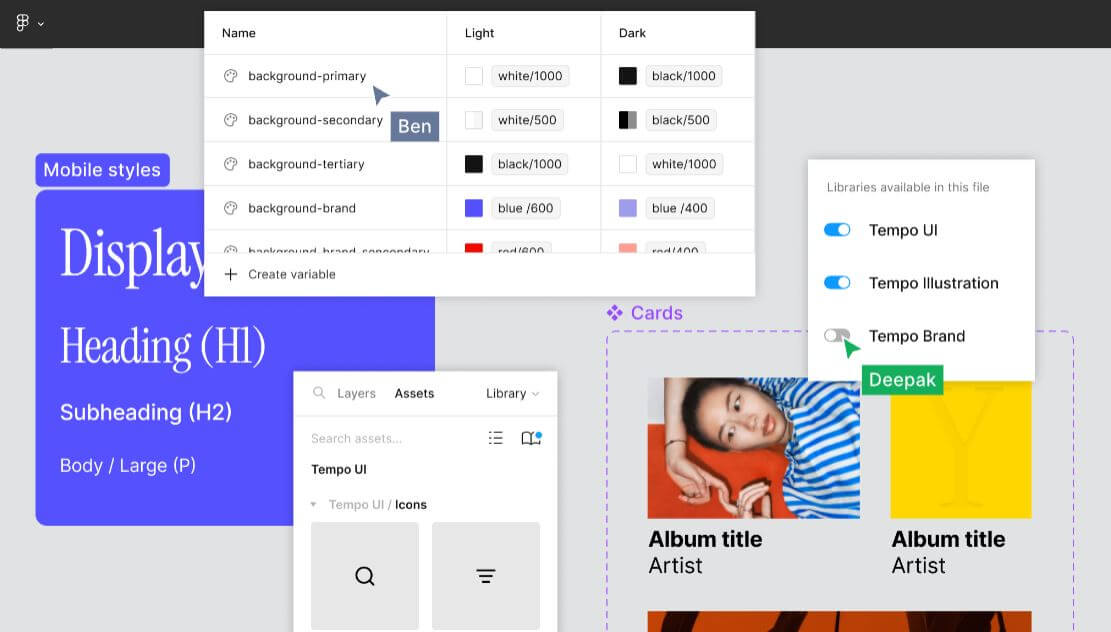
Figma’s design systems feature is a powerful tool for creating and managing a unified visual language across an organization’s various projects and platforms. It allows teams to build and maintain a library of reusable components and styles, such as buttons, color schemes, and typography.
This centralized system ensures that all design elements are consistent and up-to-date, which is vital for maintaining brand identity and coherence across different products and services.
The shared libraries in Figma can be accessed and utilized by anyone on the team, streamlining the design process and significantly reducing the time spent on creating and updating individual elements.
This feature is particularly beneficial for large teams or organizations where maintaining consistency can be challenging. Figma’s design systems also support scalability, as they make it easier to update and evolve design elements as the brand or product grows and changes.
The ability to link design elements across different files means that changes made in the design system are automatically reflected wherever those elements are used, ensuring consistency and efficiency.
Furthermore, Figma’s collaborative nature extends to its design systems, allowing for easy sharing and collaboration on the development of these systems. This collaborative approach ensures that the design system is continuously refined and evolves to meet the needs of the team and the project.
By reducing redundancy and ensuring uniformity, Figma’s design systems feature empowers teams to focus on innovation and creativity, rather than getting bogged down in the minutiae of design consistency.
FigJam
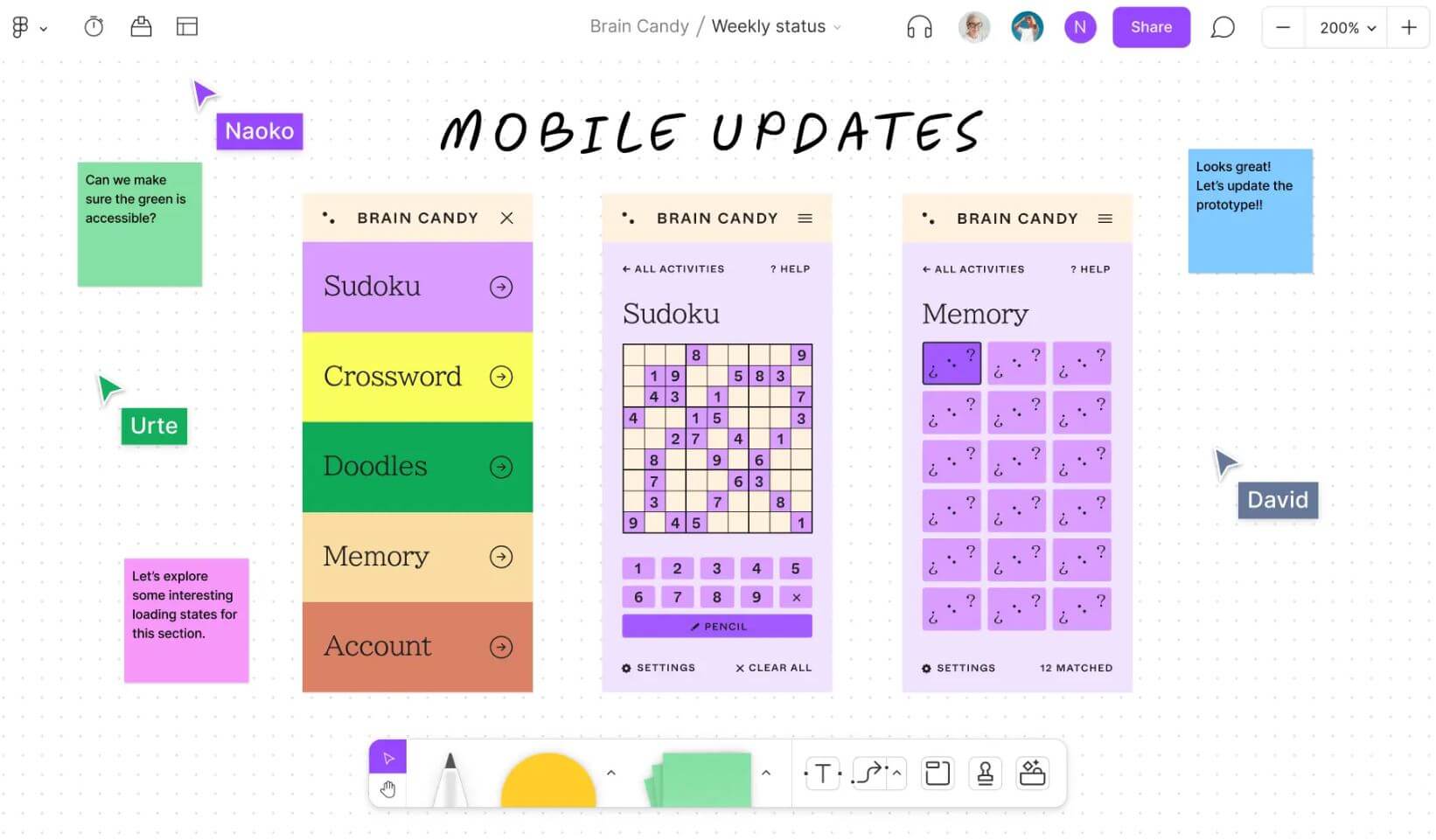
FigJam, an integral part of Figma’s suite, revolutionizes team collaboration by offering an online whiteboard designed to enhance teamwork and creativity. This tool is particularly effective in aligning teams, providing a shared space where ideas can be visualized, discussed, and developed in real time.
FigJam is versatile, catering to a wide range of collaborative activities such as project kickoffs, stand-up meetings, brainstorming sessions, and retrospective analyses.
Its user-friendly interface makes it accessible to all team members, regardless of their technical expertise, encouraging participation from various roles within an organization.
One of the key strengths of FigJam is its ability to foster a more dynamic and engaging meeting experience. Traditional meetings, often limited to verbal exchanges and static presentations, can stifle creativity and engagement.
FigJam, with its interactive whiteboard, allows team members to contribute visually, making meetings more interactive and productive.
The tool supports various types of content, including sticky notes, diagrams, and freehand drawing, enabling teams to capture and organize thoughts in a visually appealing and structured manner.
FigJam also excels in facilitating brainstorming and ideation processes. Teams can use this platform to collectively generate and refine ideas, benefiting from the diverse perspectives of all participants.
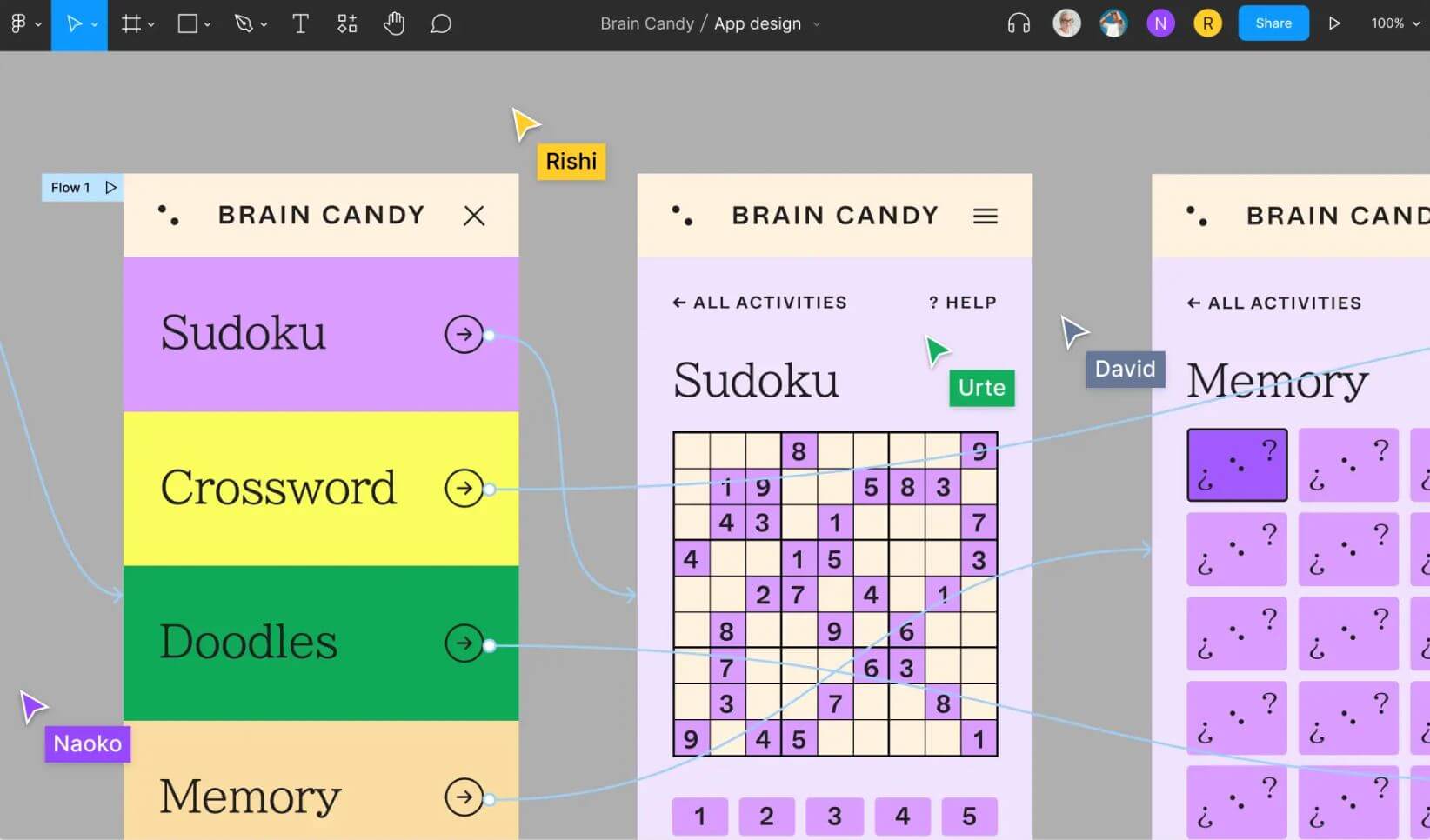
The ability to instantly add, move, and connect ideas on the whiteboard helps in creating a more cohesive understanding of the project or problem at hand. This visual approach to brainstorming not only enhances creativity but also aids in the retention and comprehension of information.
In addition to fostering creativity, FigJam is an effective tool for planning and strategizing. Teams can use it to map out project timelines, create workflow diagrams, or develop strategic plans.
The platform’s collaborative nature ensures that these plans are developed with input from all relevant stakeholders, leading to more comprehensive and well-rounded strategies.
Moreover, FigJam supports asynchronous collaboration, allowing team members to contribute at their own pace.
This is particularly beneficial for distributed teams working across different time zones. Team members can add their input to the whiteboard at any time, ensuring that everyone has the opportunity to contribute, regardless of their availability during synchronous meetings.
In summary, FigJam is more than just an online whiteboard; it’s a collaborative hub that brings teams together, fostering creativity, engagement, and alignment. Its versatility and ease of use make it an invaluable tool for any team looking to enhance their collaborative processes.
Conclusion
Figma review: Why you should use it?
Figma is a highly recommended design tool for its collaborative nature, efficiency, and versatility. It’s ideal for teams looking to streamline their design process, from initial ideation to final development.
The software’s real-time collaboration feature allows multiple users to work on the same project simultaneously, enhancing teamwork and speeding up the design process.
Its intuitive interface and extensive range of tools make it suitable for both novice and experienced designers. Figma also offers robust prototyping capabilities, enabling designers to create interactive prototypes without coding, which is crucial for testing and refining user experiences.

Pros:
- Collaborative Design Environment: Real-time collaboration with team members, including live editing and commenting, enhances teamwork and speeds up the design process.
- Intuitive User Interface: The platform is user-friendly, making it accessible to designers of all skill levels.
- Extensive Toolset: Offers a comprehensive range of design tools, including vector networks and auto layout, catering to various design needs.
- Robust Prototyping: Allows for the creation of interactive prototypes, facilitating better user experience testing.
- Cloud-Based: Ensures easy access and real-time updates, ideal for teams working remotely.
Cons:
- Internet Dependency: Being a cloud-based platform, it requires a stable internet connection, which can be a limitation in areas with poor connectivity.
- Learning Curve: While user-friendly, the extensive range of features may require some time for new users to fully grasp.
- Resource Intensive: Can be demanding on system resources, potentially leading to performance issues on less powerful devices.
- Limited Offline Functionality: Limited access to features when offline, which can be a drawback for users who frequently work without internet access.
- Potential Privacy Concerns: As with any cloud-based tool, there are inherent risks associated with data privacy and security.
FAQ

